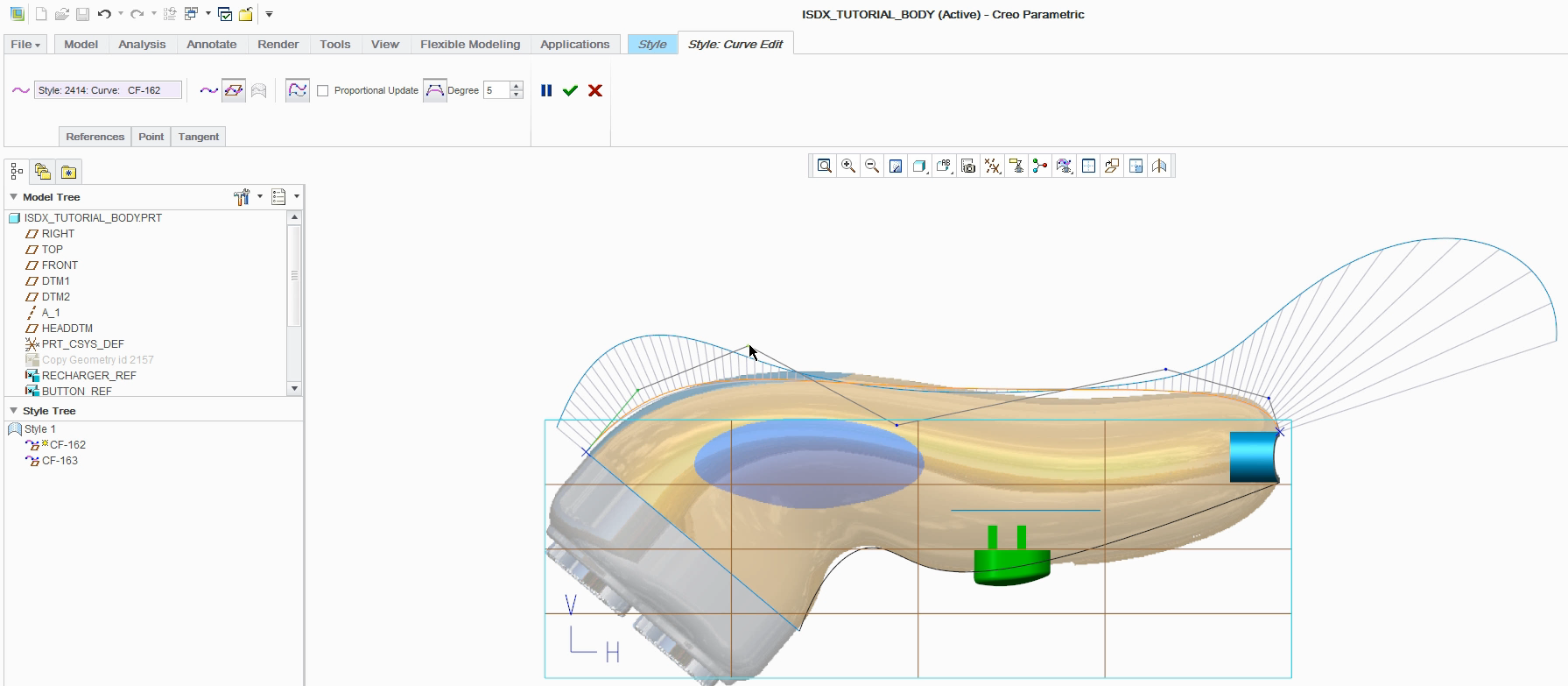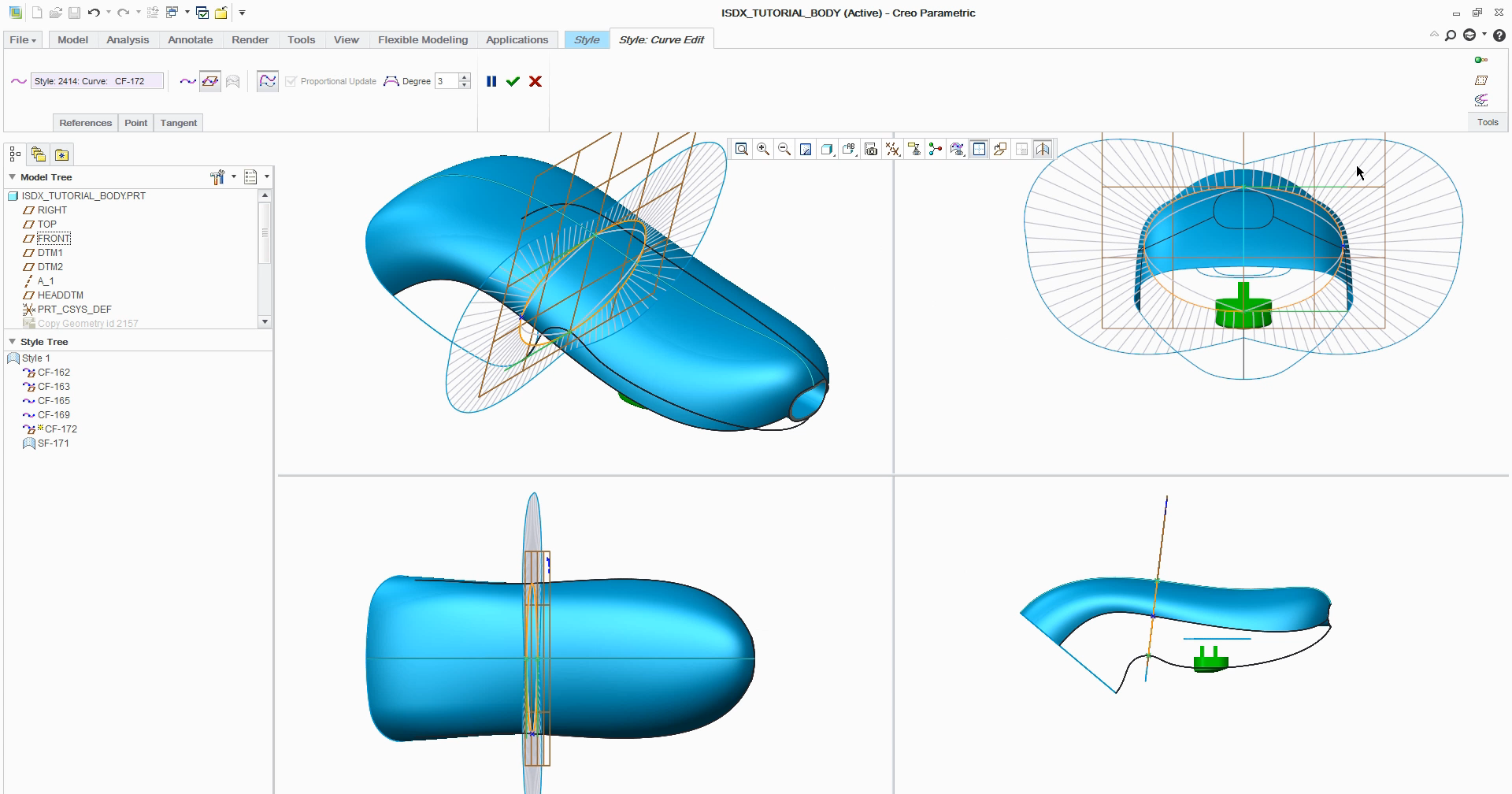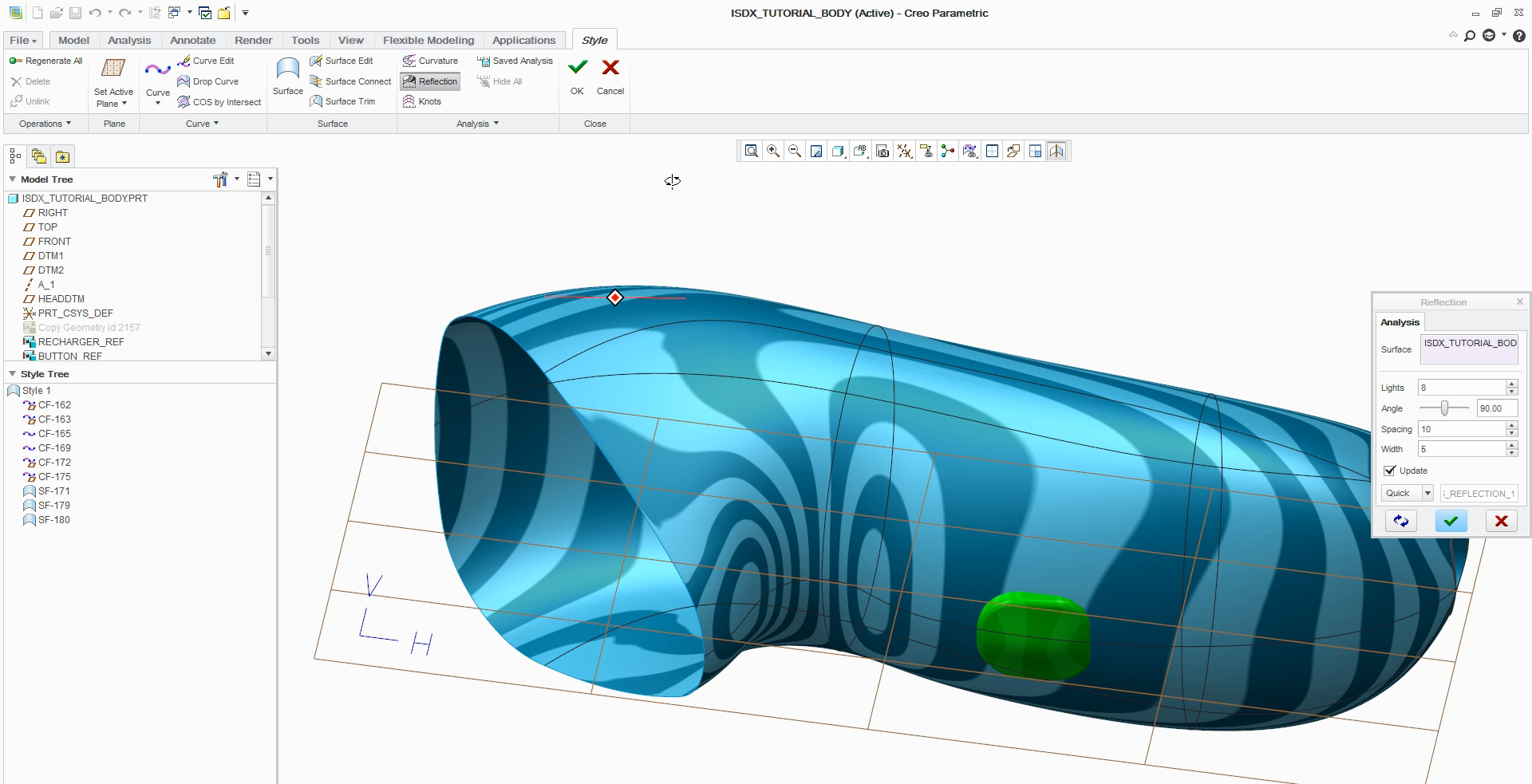Community Tip - Your Friends List is a way to easily have access to the community members that you interact with the most! X
- Community
- Creo+ and Creo Parametric
- 3D Part & Assembly Design
- Did You Know? Interactive Surface Design Extension...
- Subscribe to RSS Feed
- Mark Topic as New
- Mark Topic as Read
- Float this Topic for Current User
- Bookmark
- Subscribe
- Mute
- Printer Friendly Page
Did You Know? Interactive Surface Design Extension (ISDX)
- Mark as New
- Bookmark
- Subscribe
- Mute
- Subscribe to RSS Feed
- Permalink
- Notify Moderator
Did You Know? Interactive Surface Design Extension (ISDX)
Your customers will often pay extra for a product with a slick, effortless design. But designing that product is not always easy or effortless. PTC Creo Interactive Surface Design Extension (ISDX) can help. The extension combines parametric modeling with freeform surfacing within a single intuitive user interface so you can build freeform geometry at any point in the design project, using as few or as many constraints as desired.
In this post, a PTC expert explains how the feature works.
PTC Creo Interactive Surface Design Extension supports the quick and easy creation of aesthetically pleasing designs. Using conceptual sketches, you can lay down the outlines and curves of your product casing, so anyone can directly capture the design intent of the original concept.
To ensure that the curves correctly reflect the concept, PTC Creo ISDX provides a comprehensive set of design tools for manipulating tangency and curvature.

To create a curve, you simply specify two or more points.
For example, in the case of curvature, dynamic and interactive feedback appears through porcupine curves, including control points. You can adjust these points so the curves meet design requirements, and add extra control points, as needed.

The Connection Analysis tool includes an option to display the porcupine curve. Porcupine curves show dynamic and interactive feedback of the curvature.
To efficiently build a curve in three dimensions, it helps to be able to work in multiple planes simultaneously. PTC Creo ISDX provides a dedicated environment with four default views to support this workflow. This helps you visualize and understand the impact of changes to a curve in all planes at the same time.
Once you’ve completed the required curves, creating surfaces is simple. Just select the relevant curves, and the surface is automatically generated and can even be visually mirrored. To further refine the design, add curves to the surface definition to better reflect the original concept design intent. In my example, I add curves to the cross-sectional shape of a body. Once this is finished, the surface automatically updates to reflect my changes.

Interactive Surface Design Extension provides a dedicated environment with four default views so a designer can view an assembly’s curves from several angles.
Completing the initial shaver body design is straight-forward. Just complete the definition of the remaining surfaces using a simple pick and click approach, which provides immediate visual feedback. As part of this process, the system gives you full control over how surfaces connect. This process is not only highly productive, but it also eliminates concerns over surface quality.
One standard analysis tool used by designers to assess surface quality is reflection plots, which simulate the reflection of light off of the surface. This helps ensure that surfaces are smooth and curvature continuous without flaws.

Reflection plots simulate the reflection of light off of the model.
Once surface design is complete, you can return to (and review) the overall assembly. And, because ISDX is a part of PTC Creo Parametric, if a change needs to be made, you can react quickly and easily. For example, adjusting the angle of the shaver head automatically updates all curves and associated surfaces, avoiding a lengthy re-design process.
PTC Creo ISDX provides greater levels of control and flexibility with intuitive workflows and real-time feedback, supporting the quick and easy creation of aesthetically pleasing designs to differentiate your designs in today’s competitive marketplace.
To learn more about PTC Creo ISDX check out our video tutorial located at the bottom of this page (“PTC Creo Interactive Surface Design Extension (ISDX)”).
Stay tuned to our “Did You Know” blog series as we cover all of the exciting, new enhancements in PTC Creo 3.0.
Have some ideas about what PTC Creo product features you’d like to learn more about? Send me a message or leave a comment below and we’ll write up the best ideas from the community. Thanks for reading, looking forward to all of your feedback!
In case you missed it, see what’s new and check out our recent Did You Know posts covering PTC Creo 3.0 enhancements:
- Did You Know? PTC Creo 3.0: Intelligent Fastener Extension Part 3
- Did You Know? PTC Creo 3.0: Intelligent Fastener Extension Part 2
- Did You Know? PTC Creo 3.0: Intelligent Fastener Extension Part 1
This thread is inactive and closed by the PTC Community Management Team. If you would like to provide a reply and re-open this thread, please notify the moderator and reference the thread. You may also use "Start a topic" button to ask a new question. Please be sure to include what version of the PTC product you are using so another community member knowledgeable about your version may be able to assist.
- Mark as New
- Bookmark
- Subscribe
- Mute
- Subscribe to RSS Feed
- Permalink
- Notify Moderator
- Mark as New
- Bookmark
- Subscribe
- Mute
- Subscribe to RSS Feed
- Permalink
- Notify Moderator
Don't worry, we're working on it. Slowly but surely. ![]()
Have you designed anything cool lately? If so, you should enter our Product Design Contest. There is lots of money and a free trip up for grabs.
-Bri





